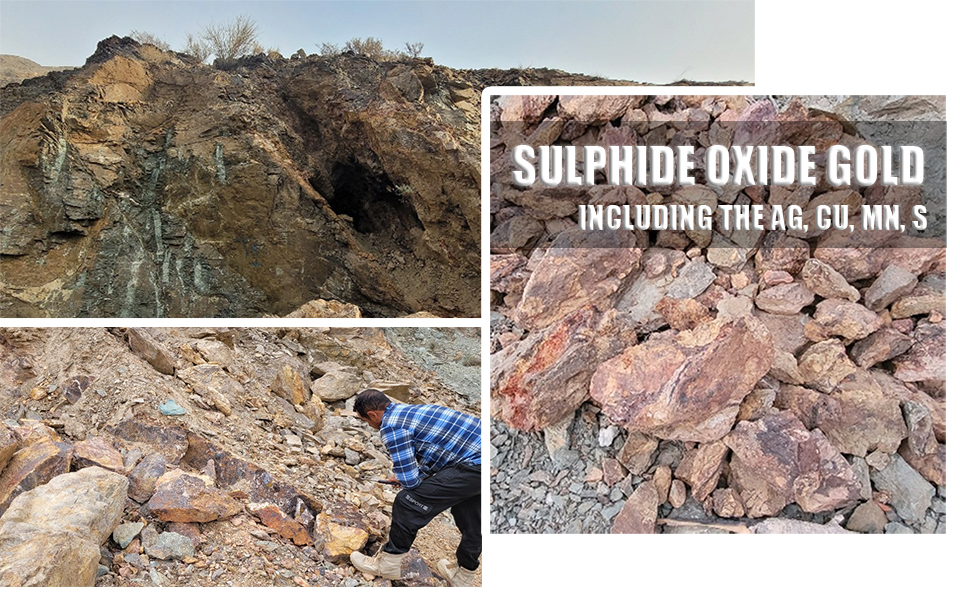How to Process Sulphide–Oxide Gold Ore in Iran?
A recently reviewed Iranian ore displays a mixed sulphide–oxide gold system with notable Ag, Cu, Mn, and S. Head grades of 1.0–3.5 ppm Au are moderate but commercially attractive when paired with a disciplined flowsheet. To fast-track deployment and control costs, we propose a containerized CIL/CIP leaching plant.
Why a containerized plant?
- Accelerated delivery and commissioning through factory-built, pre-tested modules
- Scalable capacity by adding containers as ore supply grows
- Consistent quality, instrumentation, and safety standards
- Compact footprint with reduced civil works—suited to remote sites
Ore characteristics and implications
- Elevated S and Cu increase cyanide and lime consumption and can compete for carbon sites
- Robust oxygenation is required to sustain leach kinetics in sulphidic matrices
- Selective copper management (e.g., SART) can improve gold recovery and reduce OPEX
We recommend pre-production lab and pilot work to confirm:
- Cyanide/lime consumption and target pH (10.5–11.0)
- Leach kinetics versus grind size and oxygen regime
- Copper and sulfur deportment
- Carbon loading, fouling, and regeneration conditions
- Detox requirements for tailings and effluent
- Crushing and milling
- Primary crushing and ball milling to an optimized P80 of 75–106 μm, confirmed by kinetics testing
- Thickening
- High-rate thickener to 40–50% solids by weight to reduce tank volume and enhance kinetics
- Cyanide leaching with carbon (CIL/CIP)
- Controlled pH and cyanide addition with air/oxygen sparging
- Approximate 48-hour residence to achieve the first batch of loaded carbon
- Carbon handling and gold recovery
- Interstage screening, Zadra or AARL elution, electrowinning, and doré smelting
- Carbon reactivation via kiln to maintain adsorption performance
- Copper and reagent management
- Staged cyanide dosing and lime for stability and HCN suppression
- SART where soluble copper is significant to precipitate Cu as sulfide and recycle cyanide
- Lead nitrate dosing as warranted by testwork to accelerate kinetics
- Tailings and environmental stewardship
- Tailings thickening and cyanide detox (SO2/air, peroxide, or Caro’s acid)
- Monitoring of WAD cyanide and residual Cu to meet environmental standards
Containerized plant configuration
- ISO-container modules for:
- Crushing–milling and classification
- Thickening with flocculant preparation
- Leach/CIL/CIP tankage with agitators and interstage screens
- Elution–electrowinning–smelting
- Reagents, water, air/O2, MCC/PLC controls
- Optional assay lab and carbon regeneration
- Site needs: level pad, power, raw water, kiln/boiler fuel, and compliant tailings storage
Performance snapshot
- Head grade: 1.0–3.5 ppm Au (rock gold)
- Leach density: 40–50% solids by weight
- Residence: ~48 hours to first carbon harvest; finalize via pilot testing
- Expected recovery: typically 75–90% with proper grind, oxygenation, and copper control
Testwork program
- Mineralogy (QEMSCAN/MLA), head assays (Au, Ag, Cu, S, Fe, Mn)
- Grind–leach optimization across PSD bands
- Reagent screening for cyanide, lime, oxygen, lead nitrate
- Carbon isotherms and fouling/attrition assessment
- SART amenability and detox verification
Why Dasen Mining?
- Over 30 years in gold recovery with international project delivery
- Proven containerized CIL/CIP plants tailored to mixed sulphide–oxide ores
- End-to-end support: sampling, lab/pilot, flowsheet design, manufacturing, installation, commissioning, and operator training
- Ongoing optimization: reagent audits, carbon management, and remote monitoring?
Whatsapp:+86 133 1927 7356
Email:[email protected]


